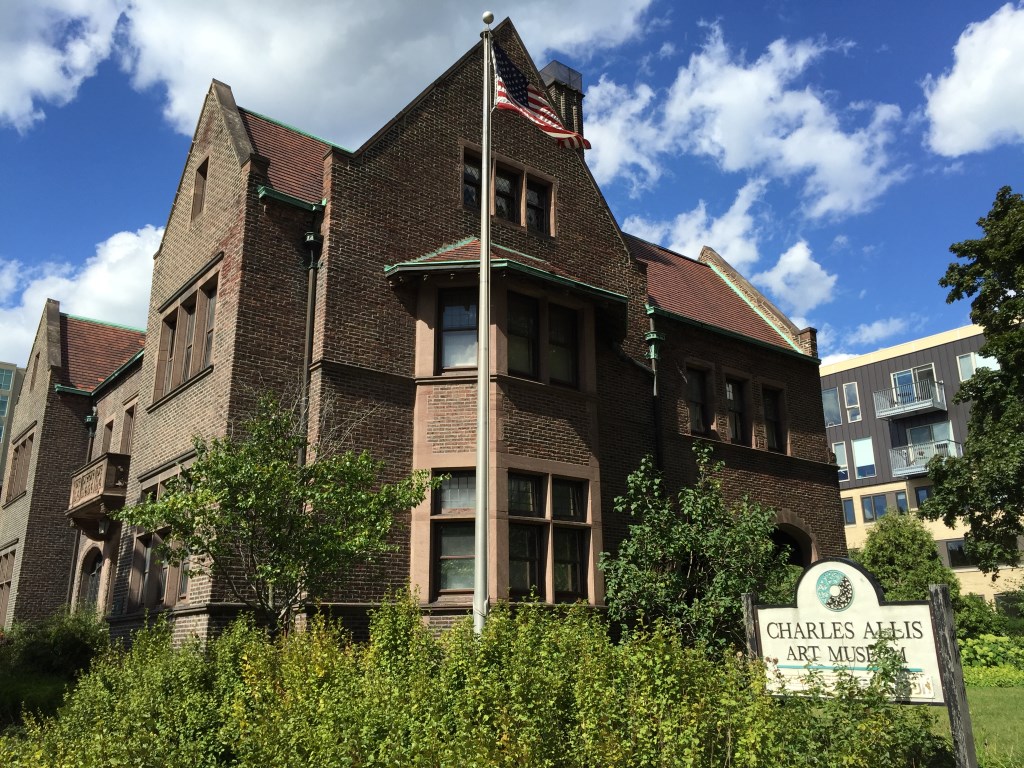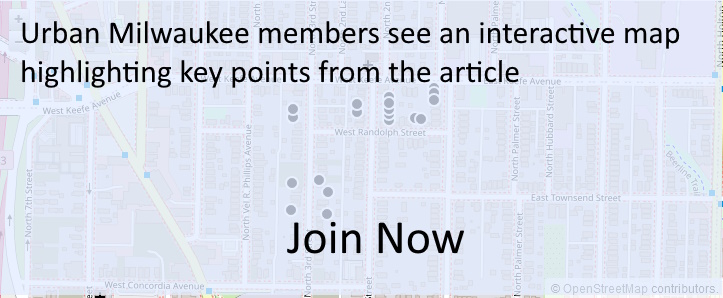Can Charles Allis Stand On Its Own?
Museum still doesn't have executive director or lease agreement with the county.

Charles Allis Art Museum. Photo by Dave Reid.
Milwaukee County is looking for signs of progress after the Charles Allis Art Museum‘s separation got off to a rocky start.
In 2024, Milwaukee County officials worked out a deal to separate and privatize the Charles Allis Art Museum and the Villa Terrace Decorative Arts Museum. For more than a decade, the two boutique East Side museums were run jointly by the non-profit Charles Allis Villa Terrace, Inc., (CAVT), with operating and maintenance funding from the county.
With infrastructure needs across the county vastly outstripping the local government’s ability to pay, Milwaukee County Supervisors voted to approve a deal to get the museums, both originally private residences, off the county’s dime. Under the deal, Villa Terrace goes to the Friends of Villa Terrace, which had long fundraised for the Villa and its gardens.
For CAVT, the deal with the county gives it an option to purchase the Charles Allis museum and its collections for $1. But it needs a viable source of revenue and a plan for maintaining the historic building. If CAVT pulls everything together by Dec. 31 this year, the county will sell the building to the non-profit. During this time, the county will continue supplying the museum with operating support, provided it meets revenue benchmarks.
But so far, things are not progressing according to plan. There remains no executive director at the museum. Board members have left. There is no business plan or fundraising plan finalized. And the staff has largely all been laid off.
Originally, the deal called for a one-year lease in 2025. During which time CAVT would operate the museum and build the organization it would need to eventually carry on without any county support. The agreement was negotiated and approved by the board but never finalized.
“Prior to execution of the agreements, concerns were raised by former Board members and community members about the viability of the organization,” according to a June 18 report by Erica Goblet, economic development project manager.
The county now wants some measurable progress before the Dec. 31 option to purchase expires. By Aug. 31, CAVT must hire an executive director, bring on a minimum of eight board members, outline a governance structure, develop a preliminary plan for maintenance of the museum and produce data on public programming and use of the museum.
The former executive director Jaymee Harvey Willms was not surprised when CAVT was caught flat footed by the county’s push to divest itself of the museum. She had pushed the board for years to fundraise, but was met with resistance, she told Urban Milwaukee. As an institution, the museum was largely adrift during her time there, with actual control perpetually in a gray area: CAVT operated the museum for years without a lease agreement with the county.
“How do you build a strategic plan when you literally don’t even know who’s in charge?” Willms said.
In the immediate wake of the split, nearly all of CAVT’s museum staff were laid off, including Willms Harvey, who was on maternity leave at the time. When she initially went on maternity leave in 2024, Interim Board Chair Marquayla Ellison temporarily stepped into the role. It was only supposed to be a few months. Now Ellison finds herself leading the board and managing the museum operations during the most pivotal time in the history of the institution.
Since the start of the year, the board has lost three members, leaving the non-profit with five board members where there were once eight.
CAVT is “actively recruiting” board members, Ellison told Urban Milwaukee. She and Jade Hess, operations and collections manager, are running the museum along with two other staff members and volunteers.
“It’s not just a governing board anymore,” Ellison said. “We have a lot more work to do, a lot more time to be committed, and it’s maybe just not realistic to even think that we could have kept [all of the board members] with so much more being needed.”
When the county stripped away Villa Terrace and gave it to the friends group it took away CAVT’s primary source of non-county revenue. The county also split the annual taxpayer contribution in half, giving 50% to each organization attempting to take the museums private.
“It’s a new start, and a new foundation that we’re building,” Ellison said. “The Charles Allis is definitely like the little sister museum to the Villa Terrace, and now it is out on its own, creating a new identity.”
CAVT has started working with a consultant, assessing fundraising potential and working on a new business model. Ellison is also trying to revamp the museum’s current business plan and looking for new sources of income, including the potential for a coffee shop, or more rental opportunities.
“Because one thing we do know is the Charles Allis Art Museum is definitely a gem, but it cannot function as just an art museum and continue to move forward,” Ellison said.
The museum needs to hit $100,000 in revenue and fundraising by the end of the year. Then, $125,000 in 2026, and $150,000 in 2027 to keep receiving operating funding from the county until the relationship is finally severed in 2028.
Whether it was ready or not the Allis was pushed in a new direction by the county. Now, Ellison and the remainder of the board are trying to rebuild the diminished institution so it can meet the terms of the deal with the county by year’s end.
“I definitely think it’s possible, but this is a show and prove year,” Ellison said.
Villa Terrace
The Friends of Villa Terrace, according to the county report, appear on track to meet the terms of the county agreement.
The organization recently hired an an executive director for the Villa, Alec Story. He comes to the museum from Texas, where he graduated in May from the University of Houston with a masters in art history and museum leadership, according to Linkedin. For nearly two years, he worked as the executive director of the Islamic Arts Society in Houston.
The friends group has executed a lease agreement with the county for the next three years, at the end of which it can exercise a $1 option to purchase. It has raised $3.1 million in both cash and pledges toward a $5 million fundraising goal for capital maintenance.
Provided it meets funding benchmarks for maintenance and operations, the county will provide the museum with $1.2 million in additional funding for upkeep and $232,554 in operating assistance through 2028.
Legislation Link - Urban Milwaukee members see direct links to legislation mentioned in this article. Join today
Existing members must be signed in to see the interactive map. Sign in.
If you think stories like this are important, become a member of Urban Milwaukee and help support real, independent journalism. Plus you get some cool added benefits.
MKE County
-
MMSD Will Build Stormwater Infrastructure in Washington Park
 Jun 25th, 2025 by Graham Kilmer
Jun 25th, 2025 by Graham Kilmer
-
Electric Vehicle Charging Stations Planned For 5 County Parks
 Jun 23rd, 2025 by Graham Kilmer
Jun 23rd, 2025 by Graham Kilmer
-
The Uncertain Future of Hales Corners Park Pool
 Jun 21st, 2025 by Graham Kilmer
Jun 21st, 2025 by Graham Kilmer






















Just to clarify, CAVT is now only involved with Charles Allis. If so, it needs to change its name to reflect its separation from Villa Terrace.
The art collection created by Charles and Sarah Ball Allis is wonderful. The building retains all of it’s original architectural charm. It is a big part of Milwaukee’s early industrial history.
It seems like the museum would benefit from connecting all the parts of this family’s story.
It’s important to really create awareness of the story of this family, their work in Milwaukee, the art, architecture and the industrial community,
As for creating events—what about having StoryCorps type regular events? Poetry slams?